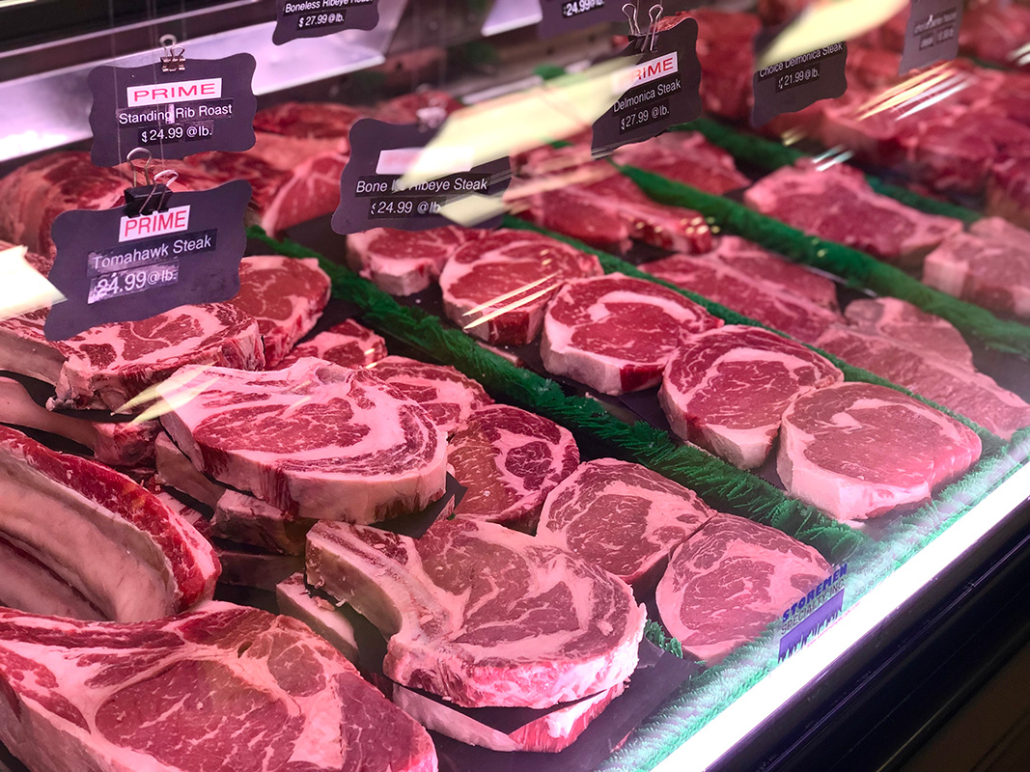Why Residents Love Bagley Farms Meat Market Edwardsville IL for Their Meat Purchasing
Why Residents Love Bagley Farms Meat Market Edwardsville IL for Their Meat Purchasing
Blog Article
Uncover the Art of the Butcher's Cut in a Modern Meat Market
In the ever-evolving landscape of modern-day meat markets, the butcher's cut has transcended its conventional origins, merging olden craftsmanship with modern methods. What truly establishes the modern butcher apart is their capability to forge a much deeper link between customers and the origins of their meat.
Development of Butchery Techniques
The development of butchery techniques shows a rich tapestry of technology and adaptation driven by developments in innovation, changes in consumer need, and a deeper understanding of meat scientific research. Historically, butchery was a craft passed down with generations, with methods refined over centuries to maximize yield and taste. The commercial change ushered in mechanization, transforming standard techniques and enabling massive handling.
The mid-20th century saw butchery strategies additionally refined by scientific insights into muscular tissue biology and meat aging, enhancing both tenderness and taste. Technologies like vacuum cleaner product packaging and refrigeration prolonged item shelf-life, allowing butchers to diversify offerings and enhance top quality control. This duration also marked the increase of specific devices, such as band saws and meat slicers, which boosted accuracy and performance in meat handling.

Computerized systems currently help in tracking pet provenance and enhancing cuts to meet particular consumer choices. Additionally, a revival in artisanal butchery has actually emerged, blending typical skills with modern expertise to cater to consumers seeking ethical and lasting meat choices.
Understanding Meat Cuts
Comprehending the details of meat cuts is vital for both butchers and customers looking for quality and worth. For butchers, specific cuts show ability and regard for the craft, guaranteeing very little waste and optimum yield.

Recognizing muscular tissue structure is essential; muscles used extra regularly by the animal tend to be harder and are best matched for slow-moving cooking methods, while less-used muscular tissues, like those discovered in the loin, are more tender and perfect for barbecuing or roasting. Familiarity with these differences encourages consumers to make informed More about the author options, enhancing their cooking ventures.
Selecting High Quality Meat
Selecting the right meat includes even more than just picking a visually enticing item from the display. The art of selecting top quality meat requires a discerning eye and understanding of certain attributes that signify freshness and quality.
Second of all, take into consideration the marbling, which refers to the white flecks of fat within the muscle mass. Correct marbling is a key indicator of tenderness and flavor, as it melts during food preparation, enhancing the meat's juiciness. Remember, higher marbling commonly associates with exceptional quality cuts, such as USDA Prime.
Texture is another vital variable; meat needs to really feel firm to the touch, not slimy or overly soft. Additionally, be conscious of the aroma. Fresh meat should have a clean, neutral odor, complimentary from any kind of sour or repulsive odors.
Combining Cuts With Cooking Methods

Alternatively, tougher cuts like brisket and chuck roast are abundant in collagen, which damages down into gelatin when cooked slowly. These cuts are excellent for braising or slow roasting, enabling the meat to soften over time and establish deep, complicated tastes. Cuts such as brief ribs and pork shoulder make out well imp source with slow-cooking methods, where extended cooking times transform their robust textures right into delicious recipes.
Lamb shanks and oxtail, which need prolonged cooking to tenderize, are best prospects for cooking or slow simmering. These techniques coax out rich, hearty tastes while preserving wetness. By comprehending the special attributes of each cut, cooks and home cooks alike can raise their culinary developments, making certain each dish is both pleasing and memorable.
The Butcher's Duty Today
Navigating the evolving landscape of the modern meat market, the butcher's duty today prolongs past simple prep work of cuts. Contemporary butchers are culinary craftsmens, instructors, and advocates for sustainable practices.
In enhancement to crafting specific cuts, butchers currently involve directly with clients, supplying cooking suggestions and tailoring selections to fit specific requirements and choices. Their competence in meat aging, marbling, and taste accounts encourages customers to make enlightened decisions, boosting their cooking experiences. This tailored service exhibits the butcher's evolving function as a relied on consultant in the kitchen.
Moreover, butchers are essential in decreasing waste, using whole pets to produce diverse products such as sausages and supplies. This detailed method not just appreciates the pet yet likewise straightens with modern sustainability objectives. In this way, the contemporary butcher embodies both practice and innovation, adjusting to an ever-changing market while preserving the virtuosity and integrity of their craft.
Conclusion
The contemporary butcher's craft intricately weaves standard techniques with modern-day innovations, highlighting lasting methods and moral sourcing. Proficiency in understanding varied meat cuts and top quality signs encourages butchers to provide educated recommendations, straightening particular cuts with ideal food preparation techniques. This knowledge not only elevates cooking experiences yet also enhances the connection in between customers and the origins of their food. By honoring historical see this site practices while welcoming modern needs, the butcher's duty continues to be essential in today's sophisticated meat market (bagley farms meat market edwardsville il).
Report this page